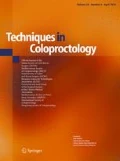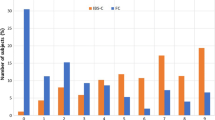Abstract
Background
The Rome criteria serve as gold standard for establishing a diagnosis of irritable bowel syndrome (IBS), but only represent a cluster of symptoms. On the other hand, measurement of colonic transit time (CTT) with radiopaque markers is a solid and more objective method to quantify functional abnormalities. The goal of this study was to investigate whether the IBS symptoms, as defined in the Rome II criteria, correspond to objective physiological parameters, i.e. CCTs.
Methods
The study enrolled 148 healthy control subjects and 1385 consecutive IBS patients. Transit times were measured for the whole rectocolon (overall CTT) and for 3 segments (right colon, left colon, rectosigmoid area); segmental distribution of markers and diffusion coefficients were also assessed. In order to analyze homogeneous groups, we restricted analysis to subjects with “normal” CTT (≤70 hours).
Results
Six hundred forty four IBS patients (46%) and 14 control subjects (9%) had CTT >70 h and were eliminated. In subjects with CTT ≤70 h, CTT did not follow a normal (Gaussian) distribution. We identified 3 different CTT clusters in healthy controls and 4 clusters in IBS patients. Even if CTT was not significantly different between clusters, each cluster was characterized by a specific pattern of segmental colonic transit. There was a marked gender difference: women had longer overall CTT values than men, both in control and IBS patient groups (p<0.001). However, female IBS patients had significantly shorter colorectal transit times than female controls (p<0.001), as well as faster transit than in men through the left colon and rectosigmoid area. There were no significant differences in transit time between male IBS patients and male controls with the exception of a faster rectal transit in IBS patients (p<0.01). There was no association between segmental colonic transit values and sign or symptoms comprising the Rome II criteria.
Conclusions
In subjects with CTT ≤70 h, CTT does not follow a normal distribution but is clustered in subgroups that can be distinguished only by measuring segmental colonic transit. Within these subgroups, there is a marked difference in transit times between IBS patients and normal subjects, suggesting that IBS patients with “normal” CTT are not “normal”. The Rome II criteria do not reflect differences in segmental transit times in IBS patients with “normal” CTT. We therefore propose to evaluate segmental transit times in IBS patients with “normal” CTT, before and after treatment, in order to correctly interpretate variations in signs and symptoms. These findings have important implications in evaluating the effect of drugs on bowel function and should help define better inclusion criteria for studies evaluating new drugs for the treatment of IBS.
Similar content being viewed by others
Author information
Authors and Affiliations
Corresponding author
Additional information
An erratum to this article is available at http://dx.doi.org/10.1007/s10151-006-0317-7.
Rights and permissions
About this article
Cite this article
Bouchoucha, M., Devroede, G., Dorval, E. et al. Different segmental transit times in patients with irritable bowel syndrome and “normal” colonic transit time: is there a correlation with symptoms?. Tech Coloproctol 10, 287–296 (2006). https://doi.org/10.1007/s10151-006-0295-9
Received:
Accepted:
Published:
Issue Date:
DOI: https://doi.org/10.1007/s10151-006-0295-9




